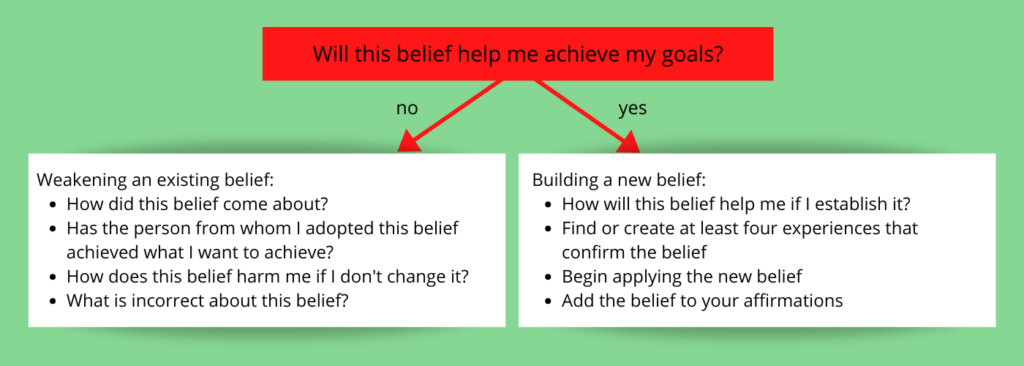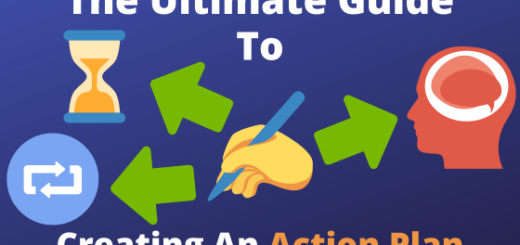Guide For Changing Your Beliefs
Your beliefs shape your thoughts and actions. A single belief can influence your entire life and determine your success or failure. Therefore, it is essential to choose your beliefs consciously and change them if needed. While reading books, you may encounter statements, philosophies, or perspectives that can inspire beneficial beliefs. This section explains how to develop or change such beliefs within a few minutes.

How to Develop the Right Beliefs
When you come across an existing or new belief, first ask yourself whether it will help you achieve your goal. Retain or build only those beliefs that are beneficial for you in this regard. The focus is not on whether a belief is true or false, but rather on whether it advances you. For your current beliefs, replace any that do not help you move forward with more constructive ones. To change a belief, start by weakening the current one and then replacing it with a new belief.
Weakening an Existing Belief
To weaken a belief, critically examine it. Consider how this belief originated. If someone else introduced you to this belief, ask whether that person achieved what you aspire to accomplish in that area. Weaken the reasons you initially accepted the belief and question the experiences on which it is based. Next, think about how holding onto this belief could harm you in the long term if it goes unaltered. Consider the opportunities you might miss, what you could lose, and what could become more challenging.
Building a New Belief
After weakening an existing belief, replace it with a new one. Adopt a belief you’ve read or create one yourself. Ask how this new belief could aid you in reaching your goal. Find as many reasons as possible to support this belief. Then, identify at least four experiences that confirm it. These can be from your life or the experiences of others. If fewer than four experiences come to mind, you can create helpful scenarios by imagining realistic situations in which the belief proves advantageous. Visualize and describe these scenarios as vividly as possible. This approach works because the brain barely distinguishes between real and vividly imagined experiences. Then, begin acting according to your new belief as soon as possible.
Example: I am 100% responsible for my thoughts and actions.
Reasons and Experiences Supporting This Belief:
- I choose my own thoughts and actions.
- For anything beyond my control, I still have the power to choose my reaction. For example, if you have a long wait in a doctor’s office, you could use that time to read a book or reflect on something meaningful.
- I can improve my thoughts and actions through planning, learning, and experience. For instance, you could learn to ask better questions to enhance your thoughts and decisions.
- Viktor E. Frankl is a strong example, as he endured four different concentration camps during World War II but maintained a positive mindset that allowed him to survive.
In addition, you can add your new belief to your daily affirmations to reinforce it further within your subconscious. Write a list of beliefs you want to strengthen and read them aloud to yourself every morning or evening. Repeating beliefs like this reinforces them and encourages you to act in line with them. To deepen this effect, recall the reasons and experiences associated with each belief as you read them. You could also rewrite the beliefs regularly instead of merely reading them aloud.




